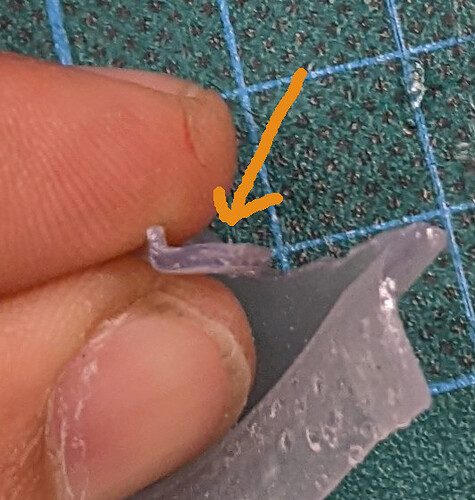Hi,
I have limited experience with printing flex objects so, I am looking for advice on understanding what I could do to improve the quality and dimensional accuracy of this print
What really matters for me is that the ellipsoidal hole is reasonably dimensionally accurate (I need to insert a part in there) and that the walls of this part are roughly what the model says they should be. The walls of the ellipsoidal hole are 0.6mm thick and most other walls vary between 0.6 and 0.9mm.
Sadly, when I print this with the “magic” button, I observe two main problems:
- the walls of the ellipsoidal hole are 0.8mm in locations marked [1] and [2] instead of 0.6mm everywhere else
- the wall at [3] is super thick (2/3mm)
I tried to invert the orientation as follows but this only made the location [4] thick

I could spend a lot of time and resin (6 hours per print/10 to 20ml) to try a lot of combinations but I am looking for advice on how to orient this model and what parameters to select for support generation. Any idea ?
Also, I noticed that after after printing/cleaning/curing, I need to wait a while until the piece cools down and relaxes to its “true” shape. Is this a common issue ? How long is it supposed for a part to be “complete” after curing ?









